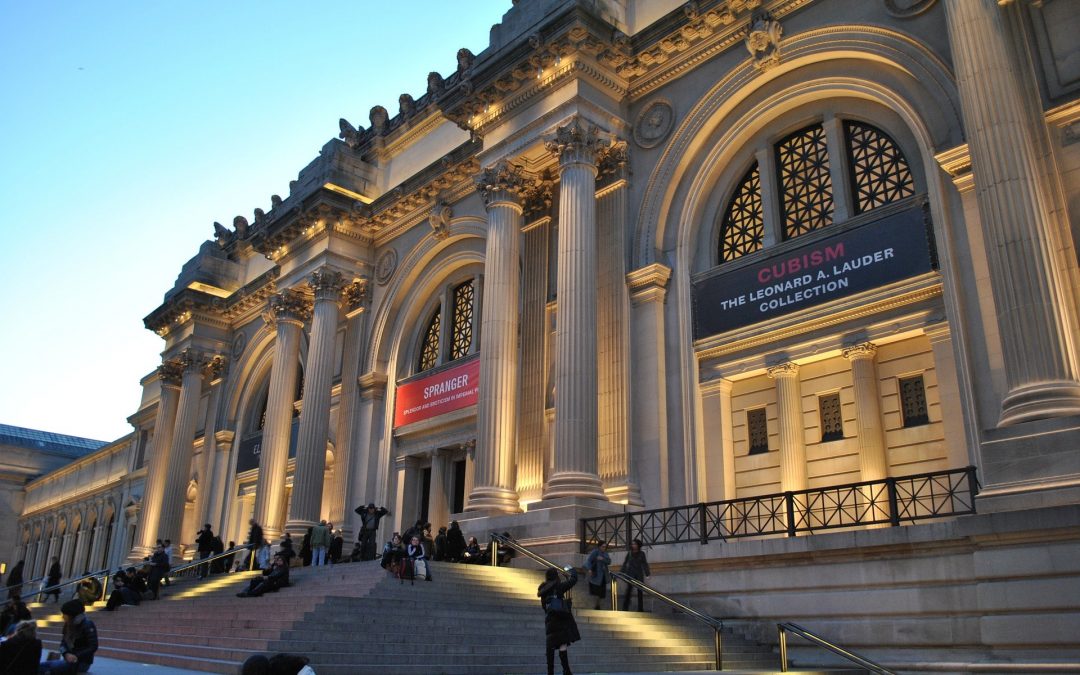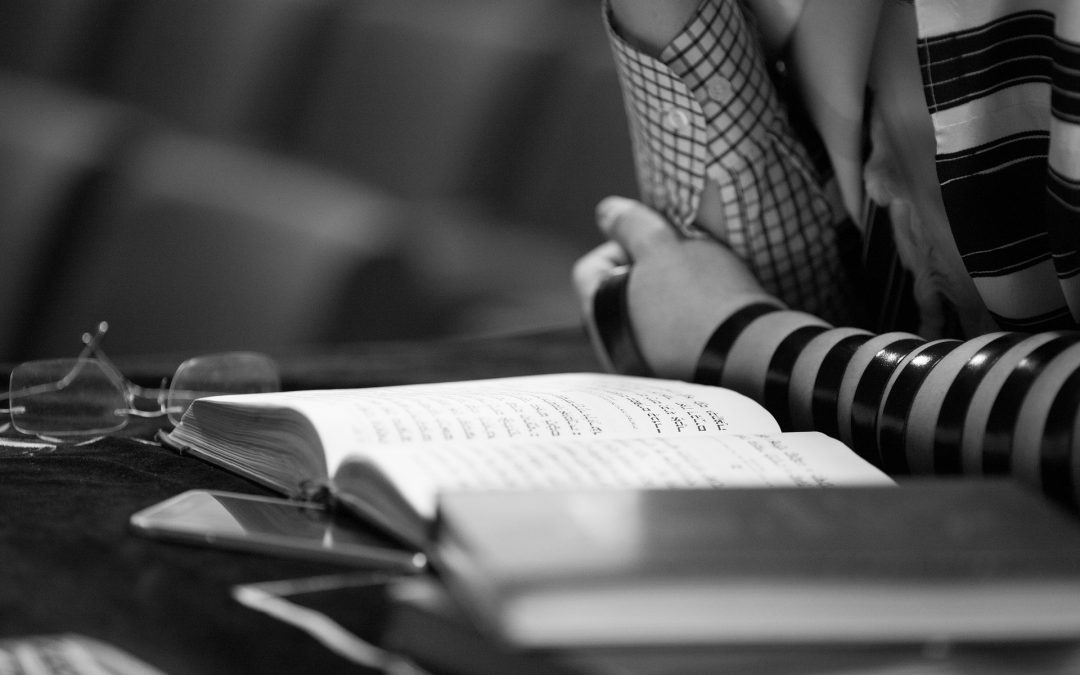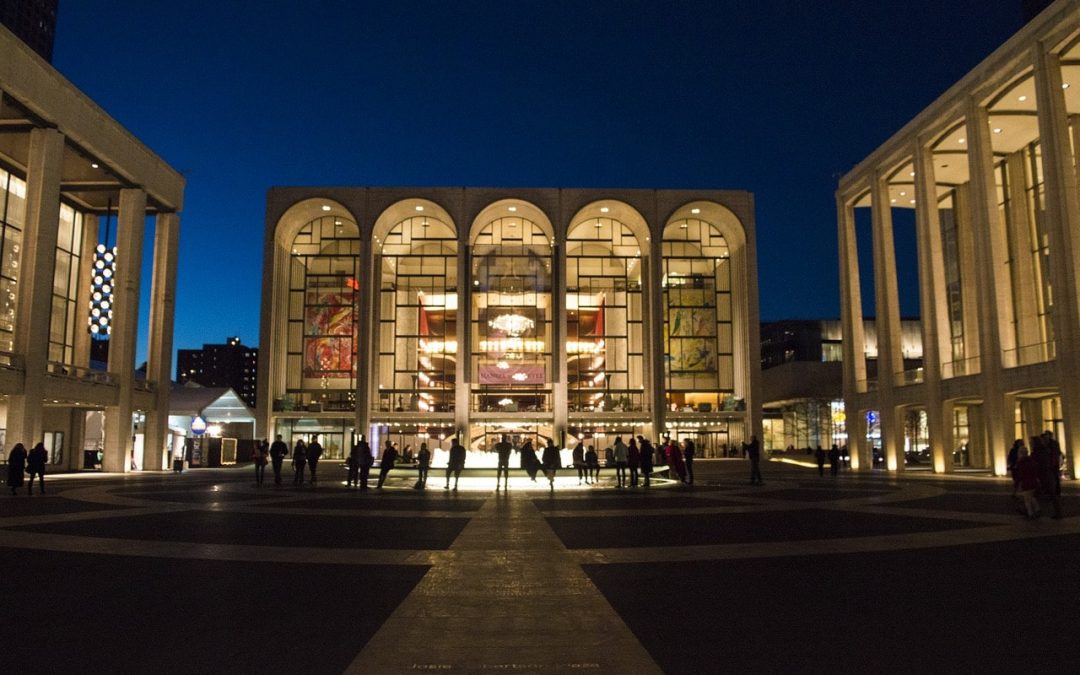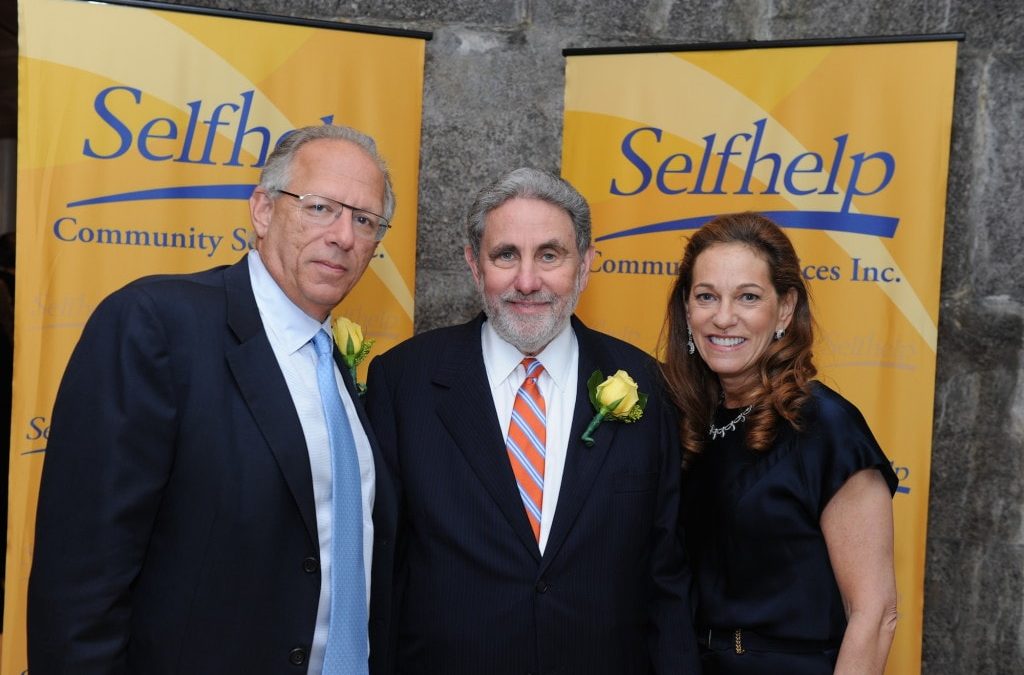Debrah's Blog

Charity Spotlight: The Friendship Circle NYC
New York City is home to numerous charities that I’m proud to support through the Charatan/Holm Family Foundation. Some of the closest to my heart are initiatives that aim to help special needs children, as well as those that enrich the Jewish community. The Friendship Circle NYC does both, which is why I believe it’s such a noble cause. This nonprofit helps to empower special needs kids, teens and their families so that they build the self-esteem needed to become productive members of society.
According to Friendship Circle’s website, “The Friendship Circle of NYC was founded on the idea that within each person is a soul, regardless of any limitations that may surround it, regardless of whatever natural gifts we may have or lack, regardless of what obstacles and challenges we may confront, our souls are sacred and worthy of boundless love.”
This applies especially to young people with special needs, who have trouble gaining access to the same opportunities as members of the general public. Their extra challenges and limitations make navigating society more difficult, and their endurance reflects on the strength of their souls. They are just as capable as anyone at offering and receiving love and acceptance. With a bit of help this truth can be fully realized.
The Friendship Circle, by providing social and recreational services, builds inclusion and friendship–the essential tools for success later in life. For members of the Jewish community with special needs kids, their services are a blessing that take the burden off of families and individuals by providing a support system that lifts those in need.
One of the Friendship Circle’s key initiatives pairs special needs children with young adult volunteers to the benefit of the kids and teens they are paired with. While special need children get a sense of involvement, engagement and fun, the young adults are instilled with a better sense of responsibility, empathy and direction.
Founded in 2008, the Friendship Circle was inspired by the Lubavitcher Rebbe, who embodied the notion that “no one of us is complete unless all of us are included.” This spirit of Jewish unity became the core of the Friendship Circle’s mission to bridge the gap between families of children with special needs and the general community. For those like myself that care about the strength of families, young people, and the Jewish community, the Friendship Circle is a wonderful cause to contribute to.

How Selfhelp is Changing Elderly and Immigrant Lives Here in New York City
New York City sits as one of the top five cities for millennial growth. Trends in both infrastructure and technology are shifting to better cater to that crowd. There are also a handful of organizations that are committed to establishing those luxuries upon a different audience. Selfhelp assists in bringing that revolution to the elderly and immigrant population here in New York City and virtually across the nation.
Selfhelp is unique in the sense that it places an emphasis on creating a stable living experience for every member with the use of a variety of programs.
Where Selfhelp began
Selfhelp is celebrating its 80th anniversary this year. The organization was built on volunteer efforts in 1936 to help those who were fleeing Nazi germany shortly before the Holocaust began. The goal was to help these transplants start stable lives here in the United States.
As more immigrants found their way to the US, it grew tough for men to find jobs because of the lack of training and language barriers. Female immigrants could work almost instantly in home care roles and Selfhelp sought to capitalize on those needs for women. Now Selfhelp has created a home aid training program; partially funded by the Robin Hood program.
The home aid training program was the first learning initiative offered to members. Over time, Selfhelp started to identify more causes that their in-house programs could help with. They also branched out to not only assist Nazi Germany immigrants but the elderly population as well.
The Future of Affordable Housing Starts with Selfhelp
By broadening its audience, Selfhelp has been able to quickly expand. Selfhelp has accommodated more members but they’ve grown to establish new programs too. A good amount of Selfhelp’s resources has been directed towards expanding their affordable housing program. As leaders in affordable housing, Selfhelp wants to further improve the living experience in these buildings as well. They provide a rolodex of services on call: social worker assistance, nurses assigned to each building, health and wellness services, homecare services, and advanced technology usage.
In it’s earliest days, Selfhelp’s affordable housing program was made up of two buildings in Queens, NY built for Holocaust survivors. Now, the affordable housing program is made of nine of these buildings located all across New York City. A major part of Selfhelp’s approach to improving the experience and safety of their homes is through technology. Selfhelp focuses on four main areas of housing technology:
- Sensor technology – Selfhelp uses in-home sensors placed where people tend to interact most in their homes. These sensors learn the resident’s patterns of behavior over a three week period. Any irregularities in this behavior will be noted and alert the prearranged contact person (in the bathroom for an irregularly long time, detects falls, etc).
- Teller Health – Teller Health is a way for tenants to self monitor their health. Kiosks stand in each building lobby to collect data and notify the dedicated nurse if anything is out of the ordinary.
- Computer classes – Classes are available through Selfhelp meant to teach the elderly how to use new software.
- Virtual Senior Center – The Virtual Senior Center is a virtual portal connecting homebound residents with the senior center in an interactive way. Now hundreds of people across the nation can access this virtual senior center where they can take classes from home. They can tour museums, book reading classes, and more. Selfhelp plans to expand into international classes in the virtual senior center class as well.
The 10th affordable housing building under the Selfhelp program is scheduled to open in 2017. I am more than honored to soon announce the title of the 10th building that will be built in my recognition. I’ve been very passionate and active in Selfhelp’s mission and I hope our next building can continue to expand that vision to those in need.
The new housing unit is extraordinarily sophisticated from a technological standpoint. Expected to house 75-90 tenants, it serves as a community for low income seniors in an area that lacks senior housing. The elderly will even have access to a recreational roof as well as the common housing services that all Selfhelp buildings offer.
With 10 affordable housing buildings soon to be functioning throughout NYC, you can imagine the impact that Selfhelp has had among the elderly and vulnerable population. Not only is this organization creating opportunities for members but we’re also are passionate about improving these lives for years to come.
Selfhelp’s commitment to establishing independent lives has been its mission for 80 years now. As the organization continues to grow, so do the programs and services that members can utilize. The affordable housing program is a major component of Selfhelp and they hope it will continue to flourish with their newest addition.

The Holocaust Museum Is Using the Past to Improve the Future
The United States Holocaust Memorial Museum is world renowned because of the initiatives that it stands behind.
The Holocaust Museum has been instrumental in informing crowds of tourists day in and day out about the intimate and tragic history of the holocaust. Over 7,000 visitors a day, including graduate students, teachers, and professors travel to the museum site for the academic experience.
But the museum’s purpose expands vastly outside of its physical presence. The Holocaust Museum hosts a full palate of educational programs to further the knowledge of the masses and prepare participants to be aware of future situations that could evolve towards genocide.
As a cultural institution they use their reach to educate and expand the knowledge of the Holocaust and its application to modern day societies. Find out how this cultural organization is changing lives through tech solutions and educational initiatives at a global level.
The Museum’s History in Brief
The Holocaust Museum is advanced in the fact that it offers its exhibits both in-person and digitally. In 2014 alone, their website received over 13 million visitors, amongst 236 countries and territories. But their immense following also exists on their social media channels too. The Holocaust Museum has over 120k Facebook fans and over 215k Twitter followers.
Yet, the museum’s online traffic is in close contest with their physically influx of visitors. Since they opened, 38.6 million people have visited the campus. The Holocaust Museum also holds an astounding 170,000 members and have toured more than 3,500 foreign officials through their display exhibits.
In the past few months, The Holocaust Museum has been the host to notable officials from the likes of European Council President Donald Musk, Japanese Prime Minister Shinzo Abe, Director of Documentation Center of Cambodia Youk Chhang, Czech Prime Minister Bohuslav Sobotka, US Secretary of Education Arne Duncan, Scottish First Minister Nicola Sturgeon, and Armenian President Serzh Sargsyan. The list continues but the diversity of these visitors is just the surface of the impact that this institution hopes to pursue.
Educating About the Past to Shape Future Communities
The Jewish Holocaust Museum is centered around a past event that changed world history, but their focus is to educate and positively affect present day people and communities.
The Museum draws scholars and educators across the world, year-round. Though, during the summer, the organization invites participants to their curriculum educational seminars that are said to, “Inspire a commitment to Holocaust teaching and learning.” They’ve managed to launch 32 public programs in eight states in 2014 alone, educate 155,217 members under their Leadership Program and they’ve grown over 7 different educational outreach initiatives.
Those who indulged came for the museum’s unique collection, archival resources, and insight that only this organization could provide. The courses are said to range from the causes of the Holocaust and its consequence to the present-day recognitions of that historical event. But the community aspect has also grown organically from these educational programs. Participants are essentially placed in a network where they can meet colleagues who share like interests.
The US Holocaust Museum’s approach to building their immense library of artifacts, both tangible and digital, is far more advanced than others. On average, the museum acquires a new collection every day and they seek to obtain objects that tell personal stories. Their team also is aggressively collecting evidence from over 50 countries across six continents. The collection currently consists of 18,100 objects, 76 million archival pages, 135 million International Tracing Service images, 89,000 photographic images, and over 100,000 books and other published materials.
With such an impressive inventory, the museum plans to find more innovative ways to use education to change the future of societies who could also face religious persecution. They are teaming up with Booz Allen Hamilton for a 12-hour hackathon to design the automation of early warning technology; allowing world leaders and civil societies access to data to anticipate and make informed decisions to prevent potential genocide.
Continuing with technology, the museum has also hosted their first person survivor conversation podcasts on YouTube, iTunes, and the museum’s website. Being that they are able to expand their presence to online communities, it has only boosted their reach and educational impact.
The United States Holocaust Memorial Museum has created a library of personal stories and published materials that tell the Holocaust narrative from a well rounded perspective. Except they further their impact by using their research and findings to help the future of modern day societies.

Metropolitan Museum of Art’s Real Estate Council
The Metropolitan Museum of Art, or ‘the Met’, represents permanent collections of over two million works divided among seventeen department curators. Since the museum’s debut in 1872, they’ve supported a variety of cultural artists. But the historic museum has its own support system. It gains support from a board of corporations and one of the more influential groups is The Real Estate Council
The Real Estate Council promotes the actual real estate industry’s representation in The Metropolitan Museum of Art. With special attention on the Museum’s educational programs, the Real Estate Council has shown to be beneficial for the organization and the growth of their educational movement that is now offered to millions of visitors each year. This council is a part of a supporting class that helps promote the positive initiatives of the Museum.
The Real Estate Council was founded in 1981 by a group of notable real estate industry leaders here in the New York City area. Frederick P. Rose, Charles B. Benenson, Burton P. Resnick, and Lewis Rudin are the founders of the Real Estate Council and support the Met Museum’s educational programs through the real-estate, construction, and architectural industry.
Made of almost 50 members and growing, the Real Estate Council is comprised prominent members of the real estate community, including structural developers, construction groups, architects, brokers, lawyers and bankers.
The Real Estate Council has built its own programs under its umbrella that also help the Museum’s educational goal. The council established the Real Estate Council Benefit in 1996, which acts as a fundraising gala for the Met Museum. The Council Benefit also honored a prominent real estate industry executives and promotes the continued support of the museum.
The support from the Council and the Benefit is put towards broader educational efforts that reach a wide range of audiences. The Museum funds educational programs like school tours, teacher training, scholarly symposia, lectures, and family programs. The Real Estate Council has been influential in growing the audience of this movement and now the Museum’s educational initiatives include over 700,000 participants.
The council has been effective collectively in supporting the Museum but council members have also been major advocates as well. Raising awareness for the Museum and their efforts both as a group and individually has been more than beneficial. The Real Estate Council hopes to continue raising awareness around the Museum’s organization and bring support to help grow their educational efforts.

Meet the Chabad Synagogue In Southampton
As the first synagogue in Southampton, NY, the Chabad of Southampton continues to operate as a pioneer organization for Jews from all walks of life. Established in 1640, our Chabad hangs a certain level of importance among its open-door, judgmental policy, and our practices have encouraged a very active and engaging Jewish community!
From Friday-night Shabbat services and educational children’s lessons to Hebrew reading courses for adults, the Chabad of Southampton coordinates programs to heighten the religious knowledge of all ages. Our community outreach activations are only the beginning of what makes our Chabad a unique house in the Jewish community. We hope to inspire not only Jewish individuals but other synagogues to further their community presence as it establishes a greater global knowledge and presence, one person at a time.
Educational Programs
Mommy & Me
Mommy & Me is a program of interactive activities for mothers and their children to learn about the Jewish tradition through an upbeat, creative and stimulating environment. These activities allow parents to teach the younger children through active learning which is the most effective educational method for kids of those ages.
From life size board games to fun character puppets, the Chabad of South Hampton tries to better their youth education in an endearing way. Join other Jewish parents as they participate in children exercises like group song, cooking, crafts and story.
Hebrew School
The Chabad Hebrew School continues the Chabad’s educational initiatives. The Synagogue offers youth classes that bring kids through the history of Judaism in an effort to expand their knowledge of the Jewish religion. The Chabad of Southampton, has earned its place as one of the trendsetters in creative Jewish educating, specifically for children between the ages of five to thirteen.
The program is propelled by the Chabad’s passionate teachers who have a tenured academic resume. Teaching students in both a class setting but also through an individual basis allows our faculty to cater to the needs of each child.
Community Building
Friday Night Shabbat Dinners

Establishing a connected community is as valuable as the Chabad’s educational initiatives. Friday Night Shabbat Dinners are a great way for community members to come celebrate the Jewish religion while engaging in conversation with like individuals.
Select Friday evenings are chosen year round for Shabbat dinners, following the day’s Friday services. These dinners are a great way to socialize and with the presence of guest speakers,
it’s easy to gain more insight into Jewish tradition from knowledgeable sources.
Setting the Difference
The Chabad of Southampton centers around accepting Jews from all backgrounds and walks of life. We’re eager to create an open environment that promotes interconnectivity and communication among individuals and organizations. Through a variety of internal programs, the Chabad invites all ages to learn further about the Jewish religion and surrounding Jewish community.
The services of the Chabad of Southampton create a casual atmosphere that should be practiced at a greater scale. These initiatives not only perpetuate the root knowledge of Judaism but also establish a network of individuals who can build a stable Jewish community now and for years to come.

The Women’s Leadership Council Brings Support to NYC’s Performing Arts
New York City’s performing arts foundations help support a unique culture that can’t be found elsewhere and it’s imperative that local groups are effective in helping the culture’s expansion. The Women’s Leadership Council is doing just that and I’m proud to be part of a movement established through the collaboration of powerful female leaders who support such an incredible community.
The Women’s Leadership Council is a group of active female business leaders who are passionate about supporting this artistic culture and influential in raising funds for eight performing art organizations at the Lincoln Center Corporate Fund. Our team has achieved an astronomical impact as it raises funds for the entire Lincoln Center campus. Since the Leadership Council’s inception in 2013, we’ve surpassed our fundraising goals each year and are eager to continue helping the growth of such a vibrant
The Women’s Leadership Council’s focus is around the eight performing arts organizations and two professional performing arts academies in residence at the Lincoln Center. Our impact has helped them establish their foundations and grow their brand by way of not only funding initiatives but other routes as well. Raising unrestricted funds is just the forefront of the our interests but community involvement is a major focus we share as well. The council engages in creative educational programming, presenting exciting new productions, and mounting free music performances.
Since our group’s inception in the beginning of 2013, we’ve reached all of our fundraising goals by a long stride and our success seems to have translated well through our events in production.
We were a driving force behind the Fashion Gala that is soon approaching its 3rd annual show at the Lincoln Center in December. The Gala is a great way to bring together like minded investors and industry supporters to an event that honors the achievements of globally acclaimed fashion designers. We’re proud to announce that this year’s Gala will feature Valentino.
The approach our council took to igniting the Fashion Gala series is the same model we have in mind in the progression of our own organization. We’ve done a great job expanding this event’s audience and the fundraising of such. But our intent with all projects involves the idea of bringing different leaders of the business community together.
As a group, we’re passionate about growing the individuals involved in both the residencies of Lincoln Center as well as this organization.
As a member of the Women’s Leadership Council you’re expected to uphold your annual membership contribution, attend quarterly Council meetings, but we take a special interest in the Council’s younger generation with our mandatory mentorship program of Junior Council Members.
Every one of us is very invested in helping develop these young business women through the beginning of their careers. Since the winter of 2014 we’ve been internally promoting this mentorship program that ultimately builds fruitful relationships between the Junior Council and tenured Council inductees.
Junior Council Members choose a mentor that they think would be a good fit for them because of the knowledge and advice they could provide. We’ve seen that relationships connect because members are within similar industries or personal networks. But garnering the relations of powerful minds from top to bottom helps expand our networks.
The group of leaders I’ve been able to be a part of here is such a strong foundation for the growth of the performing arts culture at the Lincoln Center. The Women’s Leadership Council creates a channel for our board to put our savvy business experience, connections, industry insight, and knowledge to initiate programs in the LC Corporate Fund through fundraising.
Having business minded individuals collaborating together is great but the fact that we’re passionate about expanding the culture is ideal. All of the supported organizations by the Council are NYC based institutions with an international presence. Seeing as our impact is global, our overseas ties have shown in our programs as well. We plan to continue establishing our local leadership through the raising of unrestricted dollars for the 10 constitute organizations and someday solidify a global stature.

JPEF Makes Jewish Partisan Awareness an Educational Movement
With over 8500 affiliated educators and over 1 million students reached universally, the Jewish Partisan Educational Foundation has created an educational curriculum to raise awareness around Holocaust pioneers.
But most who’ve been following JPEF aren’t aware of the monumental feats the foundation has been able to conquer nor our plans for future growth. JPEF originally began as a library of interviews of surviving Jewish partisans and grew into a movement to educate thousands of schools at a global level about this part of history.
The Jewish partisans are a group of 20,000-30,000 Jews who were active in the resistance against the Nazi regime. Unbeknown to the majority, the surviving Jewish partisan population is still prevalent in the US, which is the cause our foundation was built upon.
The idea was conceptualized when Mitch Braff, Founder and Executive Director of JPEF, encountered a Holocaust survivor who also happened to be a Jewish partisan. His initial goal was to interview surviving partisans. From that library of content he would create short films intended for schools and educational functions. This revolutionary group is not only somewhat of a mystery to our nation as a whole, but to the newer generations of the Jewish religion as well.
Eventually, Braff’s vision grew into an organization that operated upon a much larger scale. JPEF began to focus on distribution through educators and broadening the schooling of this blanketed part of history. Our focus soon shifted from building a vault of video content around the heroic resistance to spreading the knowledge instrumentally at a macro level.
With a clear direction and stable team, JPEF was able to expand the foundation’s audience and, in turn, grow the educational reach. It was an honor to help JPEF establish a presence in the New York City communities. In my years with JPEF, I’ve seen major organizational triumphs, like the ability for JPEF to offer free, ready-to use materials for teaching History, Leadership, Ethics and Jewish Values.
JPEF is known for its online learning platform but its presence in the classroom is just as strong. The foundation currently has curated a total of 20 different printed guides and a multitude of short historical documents which are an integral part of the curriculum.
With over 8500 participating educators around the world, JPEF’s presence is undoubtedly impactful but a movement doesn’t grow to this level without a vision. JPEF reaches over 1 million students universally — a direct result of the crafted internal model of the foundation.
JPEF houses two parts to its business, content development and distribution. The two lanes compliment one another nicely. The content development consists of the creation of Jewish partisan interviews on film, study guides, and of course the online learning platform. But the distribution focus of JPEF is the lane that will spearhead the foreseeable future of the organization.
Plans to expand out of the classroom and partner with other Holocaust-related organizations are in the works. JPEF is the only organization in the world teaching about the Jewish partisan group. Working with foundations like the US Holocaust Museum and the Houston Holocaust Museum creates another outlet to further our educational goals and add a new aspect to Holocaust related museums that isn’t readily available now.
JPEF is looking to create a network of hand-selected partnering organizations to help teach the Holocaust history in whole. Expect new and exciting changes in JPEF’s learning initiative in the near future.

80 Years Strong: Selfhelp Aids Those Most in Need
According to a 2014 census report, 40.3 million Americans were age 65 or over, making up 13 percent of the country’s population. That’s 12 times the number at the turn of the 20th century, and it shows little sign of slowing down as the Baby Boomers grow older. In fact, the same report estimates that by 2050 America’s senior population will comprise nearly 21 percent of the United States. More so, the report found that in 2010 seniors were paying three times more on personal health care in a year than a non-senior. On average, they spent just under $18,500 on their own health care that year.
That’s why I am proud to donate my time to Selfhelp.
Selfhelp is an organization based in New York City that began in 1936 to aid the victims of the Nazi regime. The organization began as a way to build homes, provide clothing and offer support to survivors resettling in the United States. Today, now celebrating its 80th year of service, Selfhelp continues to offer support to nearly 5,200 Holocaust survivors each year.
Additionally, Selfhelp evolved over the decades to meet the needs of individuals and families that weren’t affected by the Holocaust as well. Today, Selfhelp is proud to support 20,000 people in need. Though mostly elderly and in New York, Selfhelp also offers aid to low income families in areas like Baltimore and San Diego as well. Regardless the background, age or need, Selfhelp’s ethos remain the same: to provide each person with everything they need to live on their own with the dignity and pride everyone deserves.
To make that possible, Selfhelp is ran by caring, invested individuals like CEO Stuart Kaplan, Vice President Lois Deutsch and a team of dedicated employees and volunteers. Through their leadership, Selfhelp brings services into the home. These services run the gamut of elder care needs. From providing clothing as well as health and home care services to balancing checkbooks, Selfhelp strives to ensure that the elderly can live on their own as long as they live. This is a prime principle of the organization for several reasons, including the mental strain being in a confined space can do to a person that lived through the Holocaust.
“We’re going through a very complex time in health care with the advent of long-term managed care, new conglomerations with hospitals and community organizations,” explains Deutsch. “Things are rapidly changing.” And that’s exactly why Selfhelp continues to operate. That’s because their team understands that even the wisest person can be completely overwhelmed if they aren’t versed in elder care needs.
“What the state and nation should do is provide services that allow our growing population of seniors to live independently in the community and the home,” explains Stuart Kaplan. Another point Kaplan and Deutsch made was that there are an increasing array of seniors in the world. With people living longer, the needs of a 65 year-old senior can greatly vary from someone over 100 years-old. “There needs to be an investment in elder care,” Kaplan stated. Because of this need, Selfhelp developed a range of services to reach even a bed-restricted senior.
Cutting edge technology like household sensors grow to learn the habits of a senior to ensure they are doing well. If the system doesn’t register the senior moving from their bedroom at a certain hour or other daily routines, an alert will go out to notify proper responders. In other areas of need, Selfhelp understands the importance of interaction. That’s why their Senior Source technology transports seniors into classrooms and activities with skilled teachers and other seniors. By doing so, everyone is able to socialize and interact with like-minded friends–a vital need in personal mental health.
One event I am particularly fond of is Selfhelp’s weekly Coffee House events where the seniors can congregate, listen to music and have fun in a lively environment. By boosting spirits and providing community, the elderly are reminded they are far from forgotten and certainly loved. It’s truly heartwarming to see everyone in such high spirits each week.
With locations on four boroughs and Long Island, Selfhelp is proud to have 26 sites with offices helping Holocaust survivors, the elderly and others in need. Those looking to get involved in Selfhelp are encouraged to visit one of their locations, or they can attend an event for first-hand experience. If you would like to learn more about Selfhelp and its services, please contact Lois Deutsch or call (212) 971-7621.